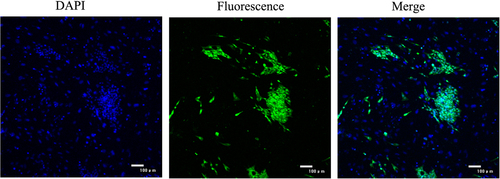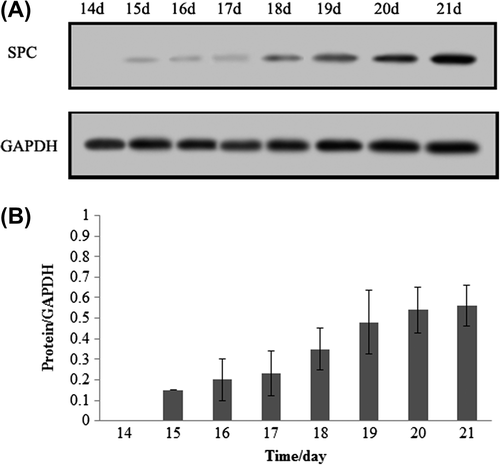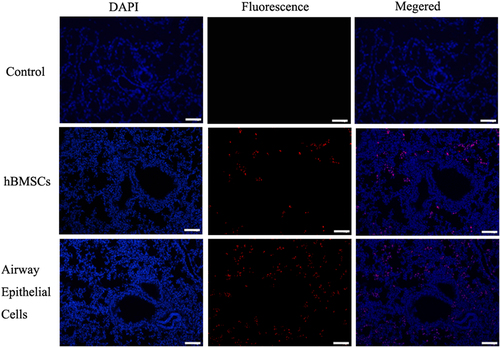Figures & data
Figure 1. hBMSCs were differentiated into airway epithelial cells by cocktail factors induction. hBMSCs metamorphosed from spindle- to round- or irregularly-shaped at fifteen day after inducement, until the cells were very closely located to each other and developed a cobblestone pattern. (A) Day 0 after inducement, (B) Day 5 after inducement, (C) Day 10 after inducement, (D) Day 14 after inducement, (E) Day 15 after inducement, (F) Day 17 after inducement, (G) Day 19 after inducement, (H) Day21 after inducement. (bar = 100 μm).

Figure 2. Identification surface markers of airway epithelial cells. The surfactant protein C, a specific marker of type II pneumocytes was detected using immunofluorescence.

Figure 3. Western Blot analysis of airway epithelial cells -specific genes. (A) the specific marker of type II pneumocytes, surfactant protein C was detected using western blot, the results showed that surfactant protein C were positive at fifteen day after inducement, and showed a time-lapse increase with induced time. (B) Quantification of surfactant protein C in different induced times.

Figure 4. Transplantation of hBMMSCs, hBMMSCs-derived n airway epithelial cells resulted in mouse acute lung injury. To test whether transplantation of airway epithelial cells and hBMSCs taken part in recovery of pulmonary alveolus, paraffin section was used to observed the location for transplantation of airway epithelial cells in scathing lung tissue. Human nuclei protein was used as a label to discover the hBMSCs or hBMSCs-derived airway epithelial cells in tissue of pulmonary alveolus. The results showed that the human cells were found in mouse lung tissue through tail vein injection, but the group of type II pneumocytes was significantly higher than group of hBMSCs. (bar = 100 μm).

